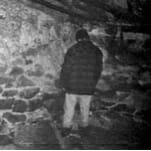After the Flood: A Brooklyn Record Label on the Road to Recovery in the Wake of Hurricane Sandy
“I don’t think anyone gets into being an artist for any reason other than they absolutely can’t do anything else. By definition, it’s an extremely resilient community.” — New York City Department of Cultural Affairs Commissioner Kate Levin on WQXR, shortly after Hurricane Sandy hit the East Coast.
Red Hook, a section of New York that was particularly devastated by Hurricane Sandy, sits on a nub of land that protrudes from Brooklyn’s western edge, gently guiding the Upper Bay into the East River. It’s a largely industrial but burgeoning neighborhood, and affordable warehouse and studio space has made it a haven for the arts community. It is isolated from the rest of its borough, a 20-minute walk from the closest subway station, but water taxis run from the waterfront to Manhattan. An IKEA was built there in 2008, which seems out of place in a community that doesn’t exactly exude sleek Swedish design.
Not two weeks after Sandy hit, after Lower Manhattan and other affected areas of Brooklyn had regained power and resumed their typical hustle and bustle, Red Hook continued to struggle to right itself, as did its growing artistic community. Portable generators were still set up outside various buildings; lines had formed where hot meals were promised; “Flood damage. Waiting for towing” was hastily scrawled on signs clipped under the windshield wipers of abandoned cars; old men pushed shopping carts down the sidewalks collecting scrap metal; the cacophonous noise of work being done was ubiquitous. It was a neighborhood in disarray, like a fighter struggling to regain consciousness and get back on his feet after a knockout.
It was during Red Hook’s woozy recovery period when I visited New Amsterdam Records, a non-profit record label specializing in new classical releases. Since forming in 2008, they have been lauded by outlets like The New York Times, Time Out NY, NPR and others for their “pro-artist” approach to promoting neo-classical music that defies traditional genre categorization. In 2010, they were nominated for a Grammy award, and their artists regularly populate the classical and classical crossover charts of iTunes, Amazon and Billboard. One of the ensembles they represent, the sextet yMusic, has collaborated with Dirty Projectors, and recently appeared with the indie rockers on The Late Show with David Letterman. New Amsterdam spent the entire summer of 2012 renovating a new warehouse space two blocks from the water in Red Hook. Shortly after they finished it was ravaged by Hurricane Sandy.
Trying to find the entrance, I made my way down a narrow corridor off Van Dyke Street. I knew I was in the right place when I saw a framed piece of waterlogged sheet music propped up outside a door. Inside, furniture and assorted equipment were stacked against walls and scattered across the floor. The space was smaller than anticipated. Papers were drying on clotheslines that had been hung along a wall. A staff member pointed out a blurry water line about four feet high that encircled the building’s interior. If it had been a few inches higher, polluted seawater would have spilled into and ruined the label’s Steinway piano, which stood in the middle of the warehouse with a blue tarp tied over it. The first four feet of sewage-soaked drywall, up to the water line, had been excised. They planned to replace it with more water-retardant material.
The damage was severe, but like many who do business in Red Hook but live elsewhere, the gravity of the situation wasn’t fully realized until the morning after the storm hit, when the staff was able to take stock of the damage.
“I was the first one to come down here,” Operations Manager Michael Hammond says in a cluttered upstairs office. On a table next to where he sat, rows of dollar bills had been laid out to dry. “The guys in front work for a lighting company and they were already unloading a bunch of their stuff. I asked one of them what happened and he was like, ‘You don’t want to go back there.’”
What he discovered “back there” was worse than he could have ever anticipated. When most people think of a flood, they think of water simply rising, slowly inching its way higher and higher. With Sandy, there was a violent surge that ripped through the interiors of Red Hook’s businesses like a washing machine’s spin cycle, tossing valuables to and fro with unimaginable force. The initial surge left around four feet of water in New Amsterdam’s warehouse, which then slowly receded over the course of the night. Six to eight inches still stood when Hammond arrived the next morning.
“The first day we were pretty much in a state of shock,” Hammond continued. “We didn’t have power so we couldn’t even Shop Vac out the water. Basically, we were just sweeping the rest of the water out the door. We got as much as we could.”
Once Hammond and the rest of the staff were able to take stock of the damage, they found that about 70 percent of their CD stock had been destroyed. New Amsterdam’s business model dictates that artists receive 80 percent of the revenue from their releases. They also control the rights to their music, which they are able to sell or license at their discretion. Because of this, the unsalvageable CDs technically belonged to the artists. “We thought the CDs being wrapped in plastic would have saved them, but the water just went right through,” said Hammond.
Also destroyed were music scores, vintage equipment, signed posters and other items of incalculable sentimental value. “I think the most emotional I got was throwing out an entire run of Missy Mazzoli’s new record,” remembered New Amsterdam co-founder and composer William Brittelle. “We had just gotten them in. It was a project that had been in development for like five years.”
-

-

-

-

-

-

-

-

-

-

-

-

-

-

-

-

-

-

-

-

-

-

-

-

-

-

-

-

-

-

-

-

-

-

-

-

-

-

-

-








































